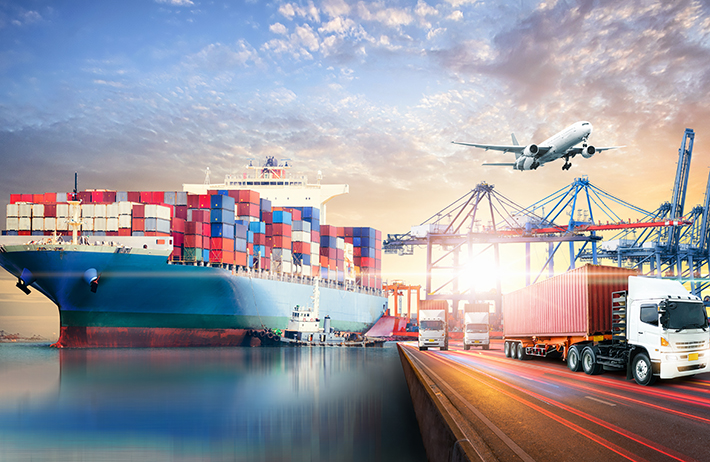
Standards, Supply Chains, and International Trade
Q. How does your experience in negotiations with the World Trade Organization (WTO) Technical Barriers to Trade (TBT) Committee, including the role of standards in trade, inform your work now?
A. It was a huge honor to represent the United States at the TBT Committee and in WTO, Trans-Pacific Partnership, and other trade negotiations. Those experiences inform my work as a counsel and advocate for clients on many levels. There is a lot of interagency work that goes into preparing a country’s positions on international trade issues, whether in a negotiation or a committee discussion; on a specific market access problem facing one of your exporters or a systemic issue. There is also a great deal of consultation that goes on with Congress and stakeholders, as well as within USTR [U.S. Trade Representative] and sometimes with other parts of the executive office of the U.S. president. I gained an understanding of how all those pieces of the puzzle work and fit together as well as a deep appreciation for the different points of view that need to be reconciled. I also saw firsthand the importance of building alliances, understanding the motivations of different delegations in the room, and how the overarching political environment was likely to impact how a particular issue unfolded.
When you have the standards portfolio at USTR, you frequently deal with critical issues of health, safety, consumer protection, and environment. You feel the burden of making sure you get it right while also pushing to ensure that your workers and companies are being treated fairly and trading partners are living up to their obligations. I also spent quite a bit of time talking with regulators and congressional staff to make sure that we were living up to our obligations as well, and trying to leave behind some structures that would improve agency decision-making. To that end, I am really proud of the work we did to update OMB Circular A-119 [U.S. Office of Management and Budget A-119, Federal Participation in the Development and Use of Voluntary Consensus Standards and in Conformity Assessment Activities] when I served at OMB. Among other things, the revision included guidance for agencies on how to comply with U.S. obligations on technical regulations, standards, and conformity assessment under WTO rules and other trade agreements.
Looking back over time, I can also see the trend moving slowly but steadily in the direction of a de facto multiple-path approach to international standards and the increased acceptance of ASTM International as a body that can develop international standards. This is likely the result of several factors, including global recognition of the technical quality of ASTM standards, the growth of the digital economy, and the traction generated over time by the TBT Committee Decision on International Standards, which is referenced in numerous U.S. trade agreements.
Q. With the USMCA (U.S.-Mexico-Canada) Agreement now in effect, and implementation and enforcement on the way, what are the implications for standards organizations? What opportunities might this present?
A. It’s definitely the strongest TBT chapter for a U.S. trade agreement in terms of the disciplines governing how the parties will determine whether a standard is international. Previous U.S. trade agreements required parties to apply the TBT Committee Decision on International Standards to make that determination, but the USMCA text goes further by prohibiting parties from applying additional criteria in making that determination. This is highly significant language because those other criteria are often used by jurisdictions to limit the types of standards they recognize as international. The USMCA text also contains language that prohibits a party from granting preferences to standards that are developed through processes that do not follow the TBT Committee decision principles, or from withdrawing acceptance of standards developed through processes that are consistent with the TBT Committee decision as a result of an agreement with a non-party.
The question, of course, is how these provisions are implemented by the parties. There is a tremendous opportunity to elevate the importance of implementing these commitments by linking the use and acceptance of standards that are developed through processes that adhere to the TBT Committee decision principles to the discussion about supply chain resiliency and the need for a unified North American approach. Use and acceptance of international standards can lower costs and decrease uncertainty, which will make North American supply chains more competitive and boost manufacturing
in the region.
Q. What do you see as the most significant challenge(s) to today’s supply chains, and how can supply chains become more resilient?
A. I think we’ve all become more sensitized to the need for increasing supply-chain resiliency in the wake of COVID-19, but supply chain disruptions due to a variety of causes — labor issues, bankruptcies of major players, weather events, accidents at terminals and at sea, cyber attacks — are quite common. When I was working on supply chain issues for Secretary Pritzker [Penny Pritzker, U.S. Department of Commerce] during the Obama Administration, supply chain was seen primarily as a transportation and logistics issue, and there was no overarching federal strategy. With President Biden’s February 2021 executive order on America’s supply chains, supply chain resiliency has become one of the top policy issues in Washington, D.C., and the dministration is developing a whole-of-government approach that includes providing incentives to rebuild U.S. supply chains in key sectors and industrial bases such as energy, defense, public health, and transportation.
There are numerous challenges that the administration and Congress will need to confront — for example, what policy levers to use to help rebuild the U.S. solar supply chain, ease shortages of semiconductors, and incentivize the growth of the EV [electric vehicle] market. In some cases, there will be tensions between key administration priorities that need to be addressed. While it will be politically difficult for the administration to unwind the tariffs imposed by the last administration, imported inputs are frequently used to produce U.S. manufactured goods for export so tariffs on those products make those goods — and their U.S. supply chains — less competitive. Statutory and regulatory changes take time to develop and could be challenged in court. There is disagreement on the type and scope of federal intervention that may be necessary; if bipartisan approaches to these issues are not found, policies could change every four or eight years, which will decrease the effectiveness of any strategies that are developed since companies need a predictable regulatory environment in which to make investments.
To ensure greater supply chain resiliency, companies should diversify their supply chains to guard against disruptions, and with a view towards ensuring continued resilience as national and regional policies evolve. These include policies to augment sourcing and manufacturing of key products and inputs domestically or from trusted international partners on national security and/or competitiveness grounds (e.g., “de-coupling,” “open strategic autonomy”) that are being instituted by major jurisdictions in specific sectors. Companies should anticipate these changes, examine their supply chains, and institute necessary changes — including shifting their supply chains and/or building in redundancies — to minimize risk and take advantage
of opportunities.
It is also apparent that many jurisdictions are understandably instituting a stronger focus on supply-chain visibility and due diligence by reducing carbon footprint, improving circularity, increasing energy efficiency, requiring prime contractors to supervise their subcontractors’ cybersecurity protocols more closely, and ensuring that goods are not produced with forced labor. With stronger regulation and enforcement being instituted — or on the horizon — these are all areas where stakeholders should be proactive and seek to develop standards covering their supply chains that could be relied on by governments as they make policy.
Q. What impact do you feel the pandemic has had on the reputation of ASTM International standards?
A. One lesson that many in the public health space, as well as the general public, learned from the pandemic is that ASTM International standards can be a tool for driving development of effective, pandemic-related products that are in short supply, on a faster timetable than regulatory development.
In particular, in February 2021, ASTM published a standard for masks that provides minimum requirements for filtration, breathability, and fit (F3502). The standard took seven months to develop, which compares very favorably to rulemaking in terms of the time that takes and the need to move quickly in a pandemic. It’s a performance standard, which promotes competition and innovation. The standard requires testing by labs accredited to ISO [International Organization for Standardization] standards, which helps to address the counterfeit issue. And key regulators and other agencies, including NIST, FDA, Health Canada, CDC, and NIOSH, participated in the standards development process [U.S. National Institute of Standards and Technology, U.S. Food and Drug Administration, Health Canada, U.S. Centers for Disease Control and Prevention, U.S. National Institute for Occupational Safety and Health]. ASTM also set up a Global Personal Protective Equipment (PPE) Collaboration Forum in February to address other issues that may arise, fill any gaps in standardization, and promote closer global alignment through collaboration among key stakeholders.
These efforts demonstrated that international standardization efforts led by ASTM International can be effective and timely in addressing important public policy issues during times of global crisis. This record of success should be considered strongly by policymakers as they contemplate legislation, policies, and strategies for addressing future public health and supply chain-related crises. ■

 SN Home
SN Home Archive
Archive Advertisers
Advertisers Masthead
Masthead RateCard
RateCard Subscribe
Subscribe Email Editor
Email Editor